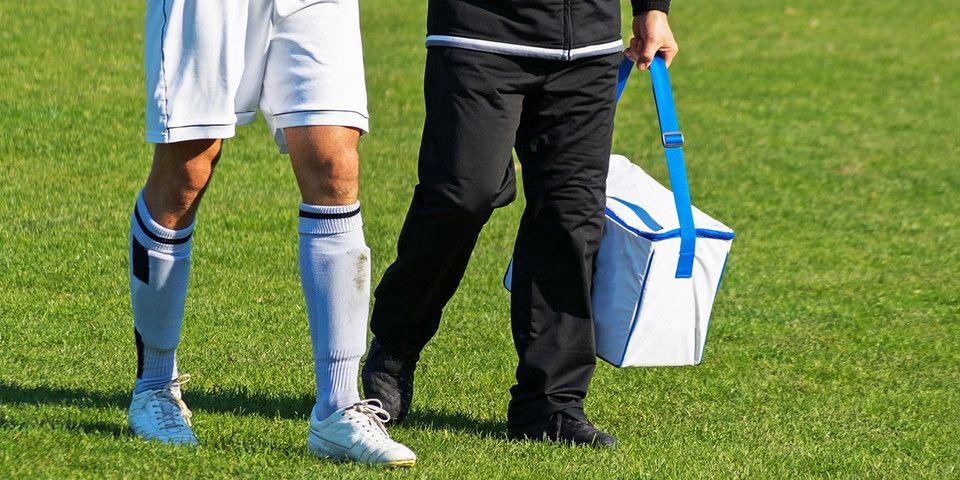Five Steps to Swimming Injury Prevention
Tips to get your body ready before you suit up.
Whether you’re a casual hobbyist or a professional swimmer, you know the importance of keeping yourself healthy. As with any sport, swimming takes strength and endurance, meaning your body needs to be in top shape to perform the way you want and need it to. Swimming injury prevention is crucial to keeping you in the water and out of pain. As you prepare to suit up, Rothman Orthopaedic Institute doctors have some recommendations to keep you in the race.
Who is at risk for swimming injuries?
Your swimming injury risk depends heavily both on the number of hours you spend in the pool, ocean, or lake and what type of swimming you do. Swimmers who specialize in the butterfly or the breaststroke have a higher risk of incurring lower back injuries, while breaststroke also puts the athlete in danger of knee injury. Those who participate in synchronized swimming, triathlons, or who swim more often in natural bodies of water are more prone to concussion.
By far the most common competitive swimming injury is swimmer’s shoulder, a condition which can cause swelling and impingement within the shoulder joint. With serious swimmers swimming upwards of 500,000 strokes a year, overuse-related muscle and joint pains are to be expected. In fact, 70% of swimmers will experience shoulder problems at some point in their athletic career.
What steps can I take towards swimming injury prevention?
As sports medicine doctors at Rothman Orthopaedic Institute, we can’t emphasize enough that swimming injury prevention starts with taking care of your body. If you aren’t healthy, your body won’t move like it should, and your risk of injury will increase drastically. With that in mind, these five safety and wellness tips are key to keeping you safe in the water.
1. Warm-up first!
Warming up your muscles, joints, and ligaments helps your body get ready to work out. Athletes who don’t start with a warm-up program have a higher risk of injury than those who do. Your coach, trainer, or doctor can give you tips on which exercises and stretches are best for the type of swimming you do.
2. Use proper technique.
In any sport, proper technique serves two important purposes. The first is to make sure that you are working as efficiently as possible for your particular event. The second is keeping you safe. Using proper technique is key to swimming injury prevention. Have your coach or trainer (or a personal trainer at your gym) watch you swim a few laps of each stroke to get a feel for your style, and then correct any mechanical errors that may put you at risk for joint and muscle problems.
3. Work out all your muscle groups
Don’t just train the muscles you think you’ll use in the water. Each part of your body works together as a whole when you’re swimming, so keeping your whole body fit is an important factor of swimming injury prevention. If you’re able, do weight training exercises a few days a week, focusing on getting all of your muscle groups ready to swim.
4. Be aware of your surroundings.
If you’re swimming in a pool, make sure you can see when you’re coming to a wall, and that you know where other swimmers in your lane are. If you’re swimming in a lake or ocean with low visibility, take your time, and be extra careful of other swimmers and obstacles. The more people are in your vicinity, the greater your risk for injury, meaning that synchronized swimmers are at particularly high risk, and need to be alert at all times.
5. Don’t swim if you’re not healthy.
If you have a fever, are particularly hot or cold, or just don’t feel well, don’t swim. An athlete who isn’t in physically tip-top shape is a danger to himself and others in the water. Take the time you need to rest and recover from any illness or injury before suiting up and diving in.
Swimming injury prevention is the primary job of every athlete, coach, and trainer. Even if you don’t swim competitively, taking care of your body has to come first. For more information about swimming injury prevention, or to make an appointment, visit us here or contact us at 1-800-321-9999.
Related Physicians
Related Specialties
Related Programs
-

Athletic Training- Sport Medicine Outreach
Our Field Athletic Trainers provide direct sports medicine care to youth, high school, college and professional athletes. Rothman AT’s provide athletic training services throughout Southeastern PA to interscholastic high schools, colleges, as well as tournaments and special events.Read More -

Women’s Sports Medicine Program
The Women’s Sports Medicine Program at the Rothman Orthopaedic Institute is the first of its kind in the Philadelphia metro area and one of only several such programs specializing in the comprehensive care of the female athlete in the country.Read More




